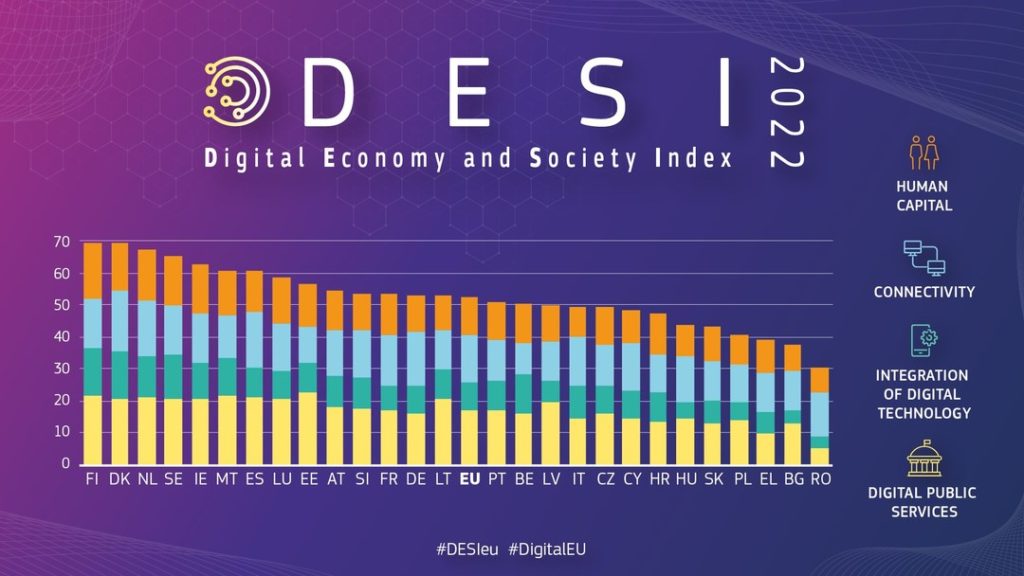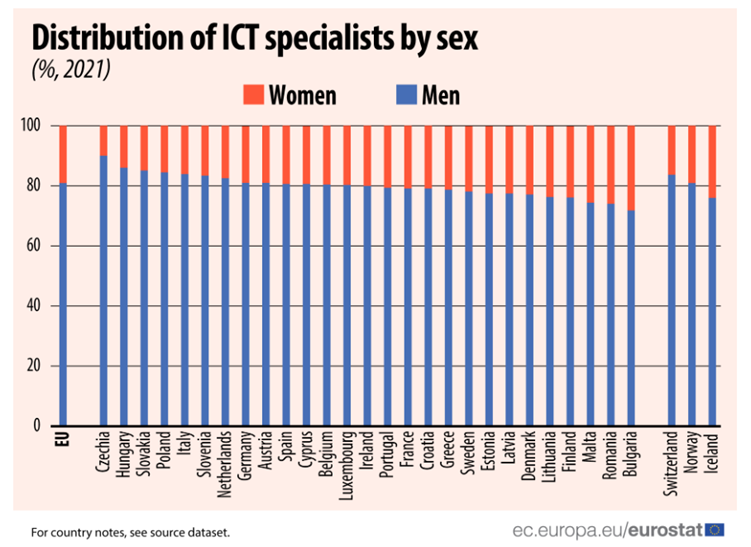HOME > GENDER EQUALITY > STATISTICS
STATISTICS
DESI 2022
In the 2022 edition of the Economy and Society Digitality Index (IDES), one of the main highlights for Portugal is the increase in the percentage of ICT specialists, which is now 4.7%, approaching the EU average (4.5%). However, disparities between companies and people continue to exist with regard to the adoption of information and communication technologies. According to the report, to reduce the digital divide in Portugal, more ICT graduates would be needed.
The study also highlights the work on Gender Equality in ICT, in which Portugal rose two positions, being above the European average. This gender balance in ICT is also transversal to INCoDe.2030.
The document also reveals that “Portugal has intensified its efforts to increase the level of digital skills of people in general and of the active population in particular, expanding the scope of the National Digital Skills Initiative INCoDe.2030“.

EUROSTAT 2021
The percentage of women increased by 6.5 pp, according to data released by Eurostat. Despite a slight increase in the last decade, women accounted for less than a fifth of ICT specialists (19.1%) in 2021. Among EU Member States, the highest percentages of women among ICT specialists employed were observed in Bulgaria (28.2%). Romania (26.0%) and Malta (25.6%), while the lowest percentages were in the Czech Republic (10.0%), Hungary (14.0%) and Slovakia (14.9%).

Women in Digital (WiD) Scoreboard
The WiD scoreboard is one of the actions put in place to assess women’s inclusion in digital jobs, careers and entrepreneurship. It is published together with the Index of Digitality of the Economy and Society (IDES), but it gives a broader perspective of the comparison of the Portuguese indicators of men and women among themselves, and with the European Union.

She Figures

Information from the 2021 Census
In the last decade, the level of education of the population has increased significantly, with the reinforcement of the population with higher education and with secondary and post-secondary education. The 2021 Census reveals that the population with higher education is 1,782,888 individuals, representing 19.8% of the population aged 15 or over (13.9% in 2011). The population with secondary and post-secondary education increased from 16.7% to 24.7%.
The 2021 Censuses show that the preferred areas of study in higher education were: “Business sciences, administration and law” (21.8%) and “Health and social protection” (15.2%). On the other hand, the study area “Agriculture, forestry, fisheries and veterinary sciences” was the least frequented, representing only 2% of the population with higher education.
Analyzing by gender, it is possible to conclude that men opted mainly for “Information and Communication Technologies (ICTs)” (80.5%) and for “Engineering, manufacturing industries and construction” (68.3%). Among women, preference was given to the areas of “Education” and “Health and social protection”, with a proportion of 84.4% and 77.2%, respectively. The areas of study STEM – Science, Technology, Engineering and Mathematics have a weight of 22.8%, being higher in men (36.9%) compared to women (13.4%).
More information here.
